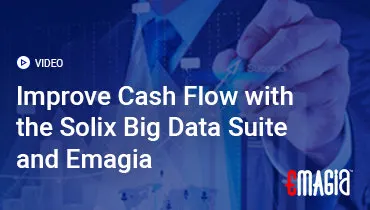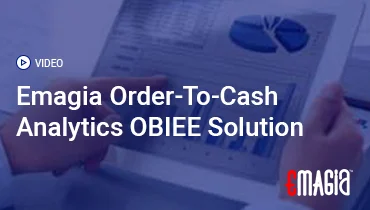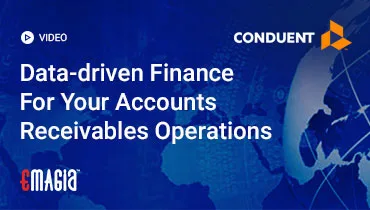An insufficient funds charge can feel like a penalty for being short on cash. You write a check or set up a bill pay, only to find out later that the money wasn’t in your account to begin with. This results in an unpleasant surprise: a non sufficient funds fee. This guide will demystify these charges, clarify the terminology, and give you the knowledge you need to navigate and avoid them.
The Foundation: What is a Non Sufficient Funds Fee?
The term non sufficient funds meaning is at the heart of this issue. When you attempt to make a payment or withdrawal from your bank account and there isn’t enough money to cover the transaction, your bank has a choice. They can either pay the transaction for you, leading to an overdraft, or they can decline the transaction entirely. An nsf fee means that your bank chose the latter option and charged you a fee for the returned item.
Decoding the Terminology: Insufficient Funds, NSF, and Other Charges
Navigating the world of banking can be confusing, especially with the various terms that seem to mean the same thing. Understanding the nuances is key to managing your finances effectively and avoiding unexpected charges. This section will break down the core definitions you need to know.
The Core Concept: What Does Insufficient Funds Mean?
The phrase what does insufficient funds mean is a fundamental question. In simple terms, it’s a notification from your bank that your account’s available balance is too low to cover a specific payment or withdrawal you initiated. This can happen with checks, automatic payments, and even debit card transactions, depending on your bank’s policies.
NSF Meaning in Banking: Unpacking the Acronym
The acronym nsf meaning bank is “non-sufficient funds.” It’s the technical term used by financial institutions when a transaction is rejected due to a lack of money in the account. When a bank says a payment was returned for nsf, they are referring to this specific event.
Differentiating Between NSF Fees and Overdraft Fees
Many people confuse an nsf fee charge with an overdraft fee, but they are distinct. An overdraft fee occurs when your bank pays for a transaction even though you don’t have the money, essentially extending you a short-term loan. The bank then charges a fee for this service. In contrast, an nsf fee is charged when the bank denies the transaction and sends it back unpaid. It’s a fee for the administrative work of returning the item.
Understanding Uncollected Funds and Their Charges
The concept of what does uncollected funds hold mean is crucial. Uncollected funds are deposited checks or electronic transfers that have not yet “cleared.” Your bank has the money, but it’s not yet available for you to use. If you write a check against these funds before they clear and your account is insufficient, you may be hit with an uncollected funds charge, also known as an uncollected funds fee.
The Anatomy of an Insufficient Funds Charge: How and Why It Happens
An insufficient funds charge can be triggered in several ways. It’s important to understand the scenarios that lead to these fees so you can be proactive in managing your account balance. This section dives into the specifics of how these charges are incurred.
Common Triggers for an Insufficient Funds Notice
An insufficient funds notice can come from various sources. The most common triggers include writing a check that bounces, attempting an automatic bill payment (ACH) that fails, or having a debit card transaction declined. Each of these scenarios can result in a separate fee.
NSF on Checks: The Bounced Check Scenario
A bounced check is a classic example of an nsf check fee. When the person you gave a check to tries to cash or deposit it, their bank sends the request to your bank. If you have not sufficient funds to cover the amount, your bank will return the check unpaid and charge you an nsf notice fee.
Electronic Transactions and the Non Sufficient Funds Fee
Today, most transactions are electronic. An eod nsf fee (end of day non-sufficient funds fee) is often triggered by an electronic debit, like an automatic utility payment. If your account balance isn’t sufficient at the end of the business day when these transactions are processed, the payment will be returned, and you will be charged a fee.
The Role of “Uncollected Funds Hold” in Your Account
An uncollected funds hold means that while a deposit has been made, the bank is waiting for the funds to be transferred from the originating bank. During this time, the money is not considered available. Trying to spend this money could lead to an uncollected funds charge, even if you see the deposit listed in your account.
How to Avoid Non Sufficient Funds Fees: A Practical Guide
The best way to deal with non-sufficient funds is to avoid them entirely. By implementing some simple financial habits and leveraging the tools your bank provides, you can keep your account in good standing and prevent these costly fees.
Proactive Account Monitoring and Budgeting
Regularly checking your account balance and transaction history is the first line of defense. A simple but effective method is to maintain a “cushion” of extra money in your checking account. This buffer can prevent an insufficient funds in bank account situation from occurring unexpectedly.
Leveraging Overdraft Protection and Account Linking
Many banks offer services like overdraft protection. This typically involves linking your checking account to a savings account or a line of credit. If your checking account runs low, the bank automatically transfers funds from the linked account to cover the transaction, potentially avoiding an nsf fee charge and a returned item.
Understanding and Managing Holds on Funds
Being aware of when your bank places a hold on a deposit is critical. Ask your bank about their specific policies on uncollected funds meaning and when deposits become available. This knowledge will help you avoid writing checks or making payments against funds that are not yet cleared.
The Rise of No-Fee Banking and the Future of NSF Charges
In recent years, many financial institutions have begun to eliminate or significantly reduce their fees, including the non sufficient funds charge. Researching banks with no-fee policies can be a smart move to protect your money from unexpected charges.
What Happens After an NSF Fee: Repercussions and Resolutions
The consequences of an insufficient funds notice chase or any other bank’s notice can extend beyond the fee itself. It’s important to understand the broader impact and how to address the situation if it occurs.
The Domino Effect: Penalties for the Recipient and the Payer
When a check bounces, the bank of the person or business who deposited it may also charge them a fee for the returned item. This is often referred to as an nsf check fee. This can strain relationships and create a domino effect of financial penalties.
Can an NSF Fee Be Waived? Steps to Take
If you get an insufficient fund fee, it’s worth contacting your bank. Especially if it’s your first time, they may be willing to waive the fee as a courtesy. Be polite, explain the situation, and be ready to ask if they can make an exception.
Addressing an Uncollected Funds Fee
An uncollected funds fee can be particularly frustrating, as you may have believed you had the money. The best way to resolve this is to wait for the funds to clear before using them. If the fee has already been charged, you can still follow the same steps as with an NSF fee and ask your bank to waive it.
Navigating Uncollected Funds with a Specialized Partner
Many businesses face the challenge of managing payments, especially when dealing with returned items and uncollected funds. A specialized platform can automate and streamline the entire Order-to-Cash process, from invoicing to cash application and collections. This helps businesses minimize the impact of non-sufficient funds, improve cash flow, and maintain healthy customer relationships. By providing a clear and automated view of outstanding payments and returns, such a solution can help businesses get ahead of potential issues before they become a major problem. This not only reduces the administrative burden but also ensures that critical steps, such as notifying customers of returned payments, are handled promptly and professionally.
Can I get charged for insufficient funds if I have a linked savings account?
No, if you have a linked savings account set up for overdraft protection, the bank will typically transfer funds to cover the transaction, and you will not receive an insufficient funds fee. However, a transfer fee may apply.
What is the difference between an uncollected funds fee and an insufficient funds fee?
An uncollected funds fee is charged when you try to spend money from a deposit that has not yet cleared. An insufficient funds fee is charged when your account’s available balance is simply too low to cover a transaction, regardless of recent deposits.
What does R09 – uncollected funds mean?
The code “R09” in a banking context refers to an ACH return code. It specifically means that a transaction was rejected because of uncollected funds, indicating a hold on the money.
Will an NSF fee affect my credit score?
A single NSF fee will not directly affect your credit score. However, if the bounced payment was for a bill or credit card payment and the late payment is reported to the credit bureaus, your credit score could be negatively impacted.
What is a good long-term solution to avoid these fees?
To consistently avoid an insufficient funds charge, you can maintain a budget, use a budgeting app to track your spending, or link your checking account to a savings account for overdraft protection.
What is a non-sufficient funds fee at Wells Fargo?
The specific non-sufficient funds fee at Wells Fargo may vary, so it is important to check the bank’s current fee schedule. However, like most banks, it is a fee charged for returned items due to a lack of available funds.
What is a nsf bank?
The term what is nsf bank is not a specific type of bank, but rather a generic reference to any bank that charges an nsf fee for returned transactions due to insufficient funds.
What is an uncollected protection deposit?
An uncollected protection deposit is not a standard term. It may refer to a specific bank’s policy, but the core concept is likely related to funds held by the bank while they clear, similar to an uncollected funds hold.
What does withdraw nsf fee mean?
The phrase “withdraw nsf fee” is not a standard banking term, but it could refer to a situation where a bank attempts to debit an nsf fee from your account, and the withdrawal itself fails because of insufficient funds, potentially leading to further charges.
What is a nfs fee?
The term “nfs fee” is a typo, likely referring to an nsf fee. NSF stands for non-sufficient funds.
How does an insuff funds situation affect my daily banking?
An insuff funds situation can temporarily restrict your ability to make payments, as your bank may decline transactions until more money is deposited. It can also lead to multiple fees if the same transaction is represented for payment multiple times.
What does non-sufficient funds mean for a small business?
For a small business, a non-sufficient funds event can be particularly damaging. A returned check can not only lead to a fee from the bank but can also disrupt cash flow and create administrative work to collect the payment again.
Is there a difference between not sufficient funds and insignificant funds?
The correct banking term is “not sufficient funds” or insufficient funds. The term “insignificant funds” is not an official banking term and is likely a misunderstanding of the correct phrase.
Popular Blogs
- What is Cash Application Process? Steps, Objectives, and Benefits
- What is Order-to-Cash Process? Challenges and Improvement Tips
- Credit Application Checklist Template: Streamline Your Approval Process
- Pay to the Order of: Understanding and Using Checks
- Automate Invoice Capture: Transforming Invoice Management
- Financial Statement Data Extraction: A Comprehensive Guide
- Streamlining Financial Systems: Automating AR, AP, and Treasury
- Best Accounts Receivable Management Software
- Credit Management Software: An Overview
- Order-to-Cash Automation: Streamline Your Business Processes
- Invoice Data Extraction: Transforming Billing Information Management
- Intelligent Document Processing (IDP): A Complete Guide
- Cash Flow Forecasting Software: A Complete Guide
- AI-powered Collection Management Software: An Overview
- Credit Management Software: Key Features and Benefits
- Electronic Invoice Presentment and Payment (EIPP)
- Invoice Automation Systems: Enhancing Accounts Payable Efficiency
- Purchase Order Extraction: Streamlining Procurement Processes
- Bank Statement Extraction: Optimizing Financial Data
- AR Automation: Revolutionizing Accounts Receivable Management
- Invoice Automation Software: Boosting Business Efficiency
- AI Invoice Processing: Enhancing Accounts Payable
- Bank Statement Processing: A Complete Guide



